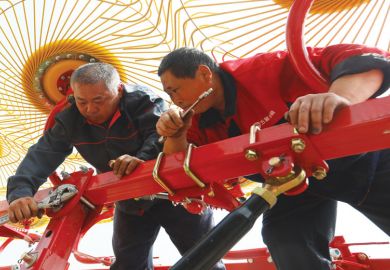One of the earliest uses of the electronic computer was to calculate gunnery tables to predict where shells might land - it was cheaper to use a computer than to fire real shells into the air and then go out and look for them. Since then, numerical analysis, computer modelling and computer simulation has grown into a major discipline.
Problems tackled by computer can vary from a simple heat flow calculation to major challenges such as modelling the impact of an aircraft on a nuclear power station. The analyst needs to understand the basic mathematical equations, the various solution methods available and how these methods perform with real problems. It is this last question that is most taxing. An engineer using a standard finite element program needs to know which elements and mesh to use, while a researcher, tackling a new problem, needs to find a way to make their program converge within an acceptable period of time. The best way to gain this expertise is to study the work done by others. It is in this area that Computer Modelling and Simulation in Engineering makes its contribution.
The policy of the journal, now in its fourth year, is to publish papers that address the application of numerical methods to real engineering problems with a minimum of discussion of the mathematical algorithms themselves. The term numerical methods is interpreted widely to include all forms of computer modelling or simulation while "real problems" mean any industrial product or process of contemporary interest.
Most contributions can be described as case studies. Some studies use commercial analysis programs, while many involve the development of new code. Some studies introduce novel numerical algorithms, and some papers use a variety of standard techniques to model a complex process. The journal will be of interest to everyone working in this field, from researchers through to engineers tackling industrial problems.
The scope of the applications presented is very wide. Topics include the dynamics of sewing machines, heating roads to weld cracks, bending plates with laser beams (by inducing plastic strain), the locomotion of a greyhound, motor-vehicle stability, the fluid dynamics of paint spraying, biochemical signal transmission, drying of wood, aeronautical applications, stresses caused by welding and casting, and, should any THES reader be producing the modern equivalent of gunnery tables, there are articles on calculating the trajectory of missiles.
Paul Mullord is lecturer in civil engineering, University of Surrey.
Computer Modelling and Simulation in Engineering: four times a year
Editor - Satya Atluri
ISBN - ISSN 1083 3455
Publisher - Sage
Price - $77.00 (individualss); $460.00 (institutions)
Pages - -
Register to continue
Why register?
- Registration is free and only takes a moment
- Once registered, you can read 3 articles a month
- Sign up for our newsletter
Subscribe
Or subscribe for unlimited access to:
- Unlimited access to news, views, insights & reviews
- Digital editions
- Digital access to THE’s university and college rankings analysis
Already registered or a current subscriber? Login



